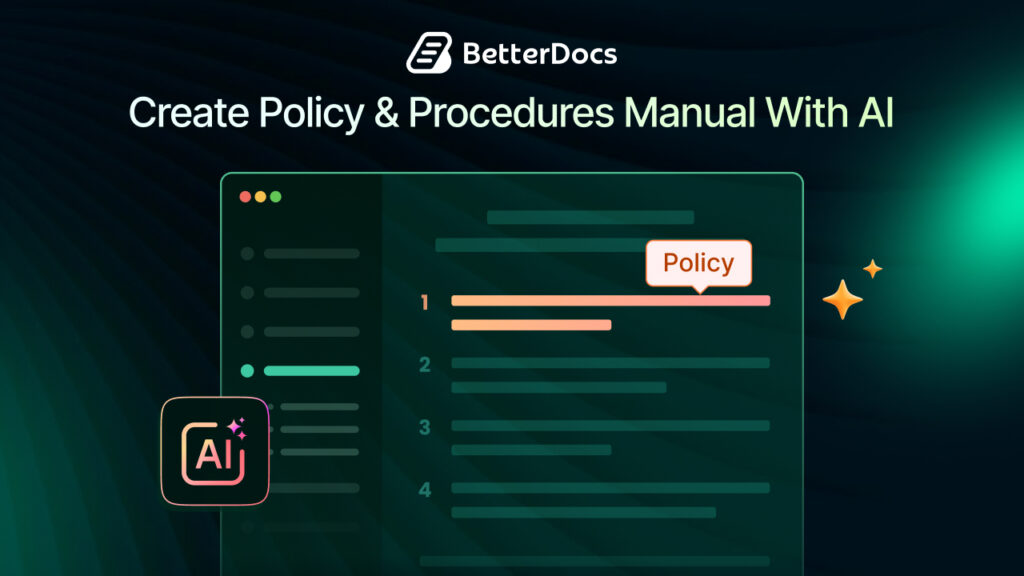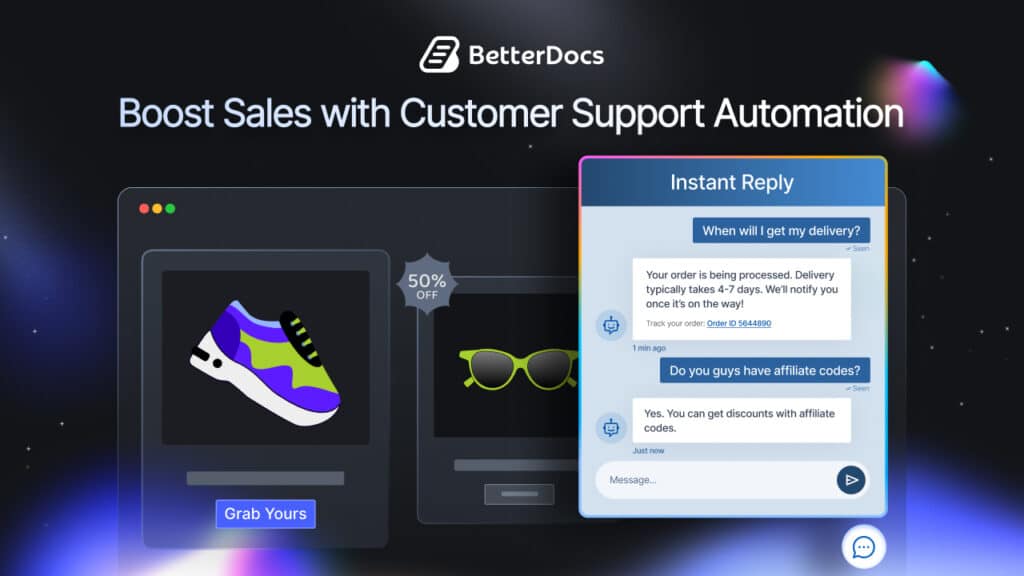In the dynamic world of product development, clear and comprehensive documentation is at the core to keep everything running smoothly. From inception to launch and beyond, effective documentation for product management serves as the blueprint, the guiding light, and the reference point for all stakeholders involved.

In this blog, we will explore five crucial types of documentation that every product manager should prioritize. So, whether you’re a seasoned professional or just beginning your journey in the field, let’s dive into the world of product management documentation and discover the power it holds in shaping exceptional products.
What is Product Management Documentation?
Product management documentation refers to the collection of written materials that outline and support various aspects of the product management process. These documents capture critical information, insights, strategies, and plans that guide the development, launch, and ongoing management of a product.
Why Should Product Managers Focus on Documentation?
Documentation is vital for effective product management for several reasons. By investing time and effort in documentation, product managers can pave the way for success and drive their products toward achieving their full potential. Let’s have a look below to know why product managers should focus on documentation.
Communication & Alignment
Documentation fosters clear communication and alignment among cross-functional teams. It provides a shared language and reference point, ensuring that everyone involved in the product development process is working towards the same goals. By documenting key information such as product vision, strategies, and objectives, product managers can effectively convey their ideas and ensure that all stakeholders are on the same page.
Historical Record & Knowledge Transfer
Documentation serves as a historical record of decisions, rationale, and learnings throughout the product life cycle. It captures the reasoning behind key choices, including market research, user feedback, and competitive analysis. This historical context not only facilitates knowledge transfer within the team but also helps in onboarding new members. By referring to documented information, product managers can avoid reinventing the wheel and leverage past experiences to make informed decisions.
Adaptability & Scalability
Well-documented processes and strategies enable product managers to adapt to changes more effectively. As the product landscape evolves, having documentation in place allows for a smoother transition. It provides a framework for scaling operations, accommodating new requirements, and addressing emerging challenges. Documentation also ensures consistency and continuity in product management practices, even as the team grows or undergoes changes.
Preserve Valuable Insights
Documentation provides a historical record of decisions and rationale, facilitating knowledge transfer and future reference. When important decisions are made, documenting the reasoning behind them preserves valuable insights for future use. This historical context not only helps new team members get up to speed quickly but also enables continuous improvement by learning from past experiences.
Collaboration
Documentation promotes collaboration among team members and stakeholders. It provides a central source of information that everyone can access and contribute to the collective knowledge. By documenting key product-related details, such as feature requirements, user personas, and customer feedback, product managers can collaborate more efficiently with engineering, design, marketing, and other teams involved in the product development process.
Risk Mitigation & Compliance
Documentation plays a critical role in mitigating risks and ensuring compliance. By documenting legal and regulatory considerations, product managers can ensure that their products meet industry standards and legal requirements. Additionally, documentation helps identify and mitigate potential risks and challenges early on, reducing the likelihood of costly mistakes and facilitating smoother product launches.
5 Essential Types of Documentation for Product Management

Effective documentation is key to driving successful outcomes in the dynamic world of product management. It ensures clear communication, alignment, and informed decision-making throughout the product lifecycle. In this blog post, we will delve into five important types of documentation that every product manager should prioritize to excel in their role.
1. Competitive Analysis Documents
Competitive analysis documents provide valuable insights into the competitive landscape. By conducting thorough research and documenting the strengths, weaknesses, opportunities, and threats posed by competitors, product managers can make informed decisions about positioning their products in the market. Key points to include in this documentation are:
- Identify direct & indirect competitors
- Explore their product features
- Study their pricing models
- Analyze their market share
- Assess their strengths and weaknesses
- Identify emerging trends and potential market disruptors
Competitive analysis documents equip product managers with a strategic advantage by enabling them to proactively adapt their product strategy, differentiate their offerings, and seize market opportunities.
2. Product Strategy & Vision Documents
Product strategy and vision documents outline the long-term goals and direction for the product. They provide a roadmap for the team, aligning everyone towards a common vision. The following points should be addressed in this documentation:
- Define the product’s mission
- Describe the target audience
- Determine the value proposition
- Outline the product’s strategic objectives and KPIs
- Describe the competitive positioning and unique selling points
- Align the product strategy with the overall business goals
Product strategy and vision documents act as a guiding light, ensuring that the product team remains focused, motivated, and aligned while working towards a shared vision of success.
3. Roadmap Documentation
Roadmap documentation provides a visual representation of the product’s future direction, key milestones, and planned features. It serves as a communication tool to align stakeholders and team members. Key elements to include in a roadmap document are:
- Clearly define the product’s release cycles and timelines
- Highlight major features and enhancements to be developed
- Identify dependencies, risks, and resource allocation
- Communicate trade-offs and prioritize initiatives based on customer needs and business objectives.
Roadmap documentation empowers product managers to effectively communicate the product’s trajectory, set expectations, and ensure that the team is working towards the right goals at the right time.
4. Internal Guides & FAQs

Internal guides and FAQs provide comprehensive documentation to support internal teams, including customer support, sales, and marketing. These documents enable teams to have a deep understanding of the product, its features, and its benefits. Key points to consider in this documentation include:
- Create detailed product documentation, user manuals, and guides.
- Address frequently asked questions and provide troubleshooting tips.
- Provide training materials for sales and customer support teams.
- Keep the documentation up-to-date to reflect the latest product changes.
Internal guides e FAQs facilitate effective collaboration and knowledge sharing across departments, ensuring that all teams are equipped with the necessary information to effectively serve customers and drive product adoption.
Con BetterDocs, the ultimate solution for WordPress documentation, you can easily create an Internal Knowledge Base and restrict access to certain documents, doc categories, knowledge base, and many more based on certain user roles.

Also, BetterDocs has a unique FAQ builder feature that allows you to easily add a FAQ section to your website’s documentation pages. To learn how to configure the FAQ builder in WordPress using BetterDocs, see this documentation.

5. Customer Journey Map
A customer journey map documents the various touchpoints and interactions a customer has with the product throughout their lifecycle. It helps product managers understand the user experience and identify pain points and opportunities for improvement. Key components of a customer journey map include:
- Identify key stages in the customer journey, such as discovery, onboarding, and retention.
- Map out the customer’s actions, emotions, and pain points at each stage.
- Identify opportunities to enhance the user experience and delight customers.
- Incorporate feedback and data from user research and analytics.
Customer journey maps empower product managers to empathize with users, identify opportunities for product enhancements, and ensure a seamless and delightful user experience.
Bonus: Introducing BetterDocs for WordPress Documentation

BetterDocs is the ultimate solution for WordPress documentation, offering seamless customization, enhanced user experience, and efficient knowledge management. It is an advanced plugin designed to enhance website documentation and create a well-structured knowledge base for WordPress. With its array of features and benefits, you can effortlessly create, configure, and customize a fully organized knowledge base on your website without any coding knowledge, using just a few clicks.
By implementing BetterDocs, you can transform your website into an interactive and user-friendly platform. It empowers you to provide in-depth information about your products or services, offers easy troubleshooting solutions, and ultimately reduces the number of support tickets. Developed by the trusted team, WPDeveloper, BetterDocs has gained the confidence of over 3 million websites. Explore BetterDocs to know the secrets to making a standard and optimized knowledge base on a WordPress site in short. With BetterDocs exclusive features you can easily avail all the features and best practices mentioned below, on BetterDocs.
- Use Modelli pronti For Website Documentation
- Add A Scrollable Table Of Contents
- Style Your Knowledge Base Effortlessly
- Resolve Queries With Risposte istantanee
- Evaluate Knowledge Base With Advanced analitica
- Add An Advanced Live Search Bar
- Create Multiple Knowledge Bases
- Translate Website Documentations Using WPML
- Create A Restricted Internal Knowledge Base
Create Necessary Documentation For Product Management
Effective documentation is a cornerstone of successful product management. By prioritizing competitive analysis documents, product strategy and vision documents, roadmap documentation, internal guides and FAQs, and customer journey maps, product managers can foster clarity, alignment, and informed decision-making, ultimately leading to successful product outcomes and customer satisfaction. You can also create SOP documentation, technical documentation, API documentation, and many more for better product management.
In the realm of product engineering, these documentation practices are equally vital, ensuring that technical and design aspects are seamlessly integrated with the overall product strategy.
Do you think this blog is helpful? Don’t forget to subscribe to our blog to read more blogs. We would love to have you in our Facebook community where you can share your knowledge and views with others.




